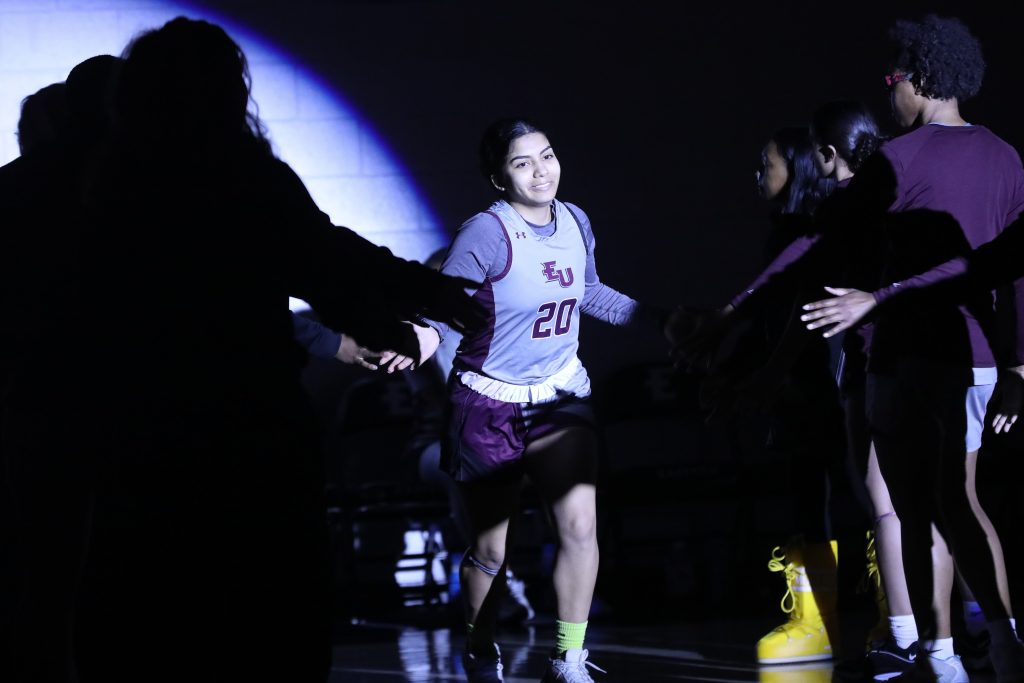When it comes to the discussion of gender in sports, it’s no question that men’s sports are given more attention and are generally more well-received by the public than women’s sports. In the basketball world, the NBA is a 10 billion dollar industry while the WNBA can’t even hold a candle with its 60 million dollar hold (World Sports Network). In 2022, the Men’s NBA finals had a total of 12.4 million viewers, while the WNBA couldn’t even make it to half a million, capping out at 412,000 viewers total (World Sports Network). Many have questioned what role sexism plays in the sports industry that prevents women from receiving the same recognition. Most of the time, we are pointed to a long-standing system in professional sports and television that prevents women from receiving the same recognition as men.
However, it becomes a curious case that this disparity in attention occurs even at the lower level. In a tight-knit community like Eastern University, we still see the same unsettling gap in attendance between the men’s and women’s basketball teams. In the 2023-24 season, the Men’s basketball team saw a difference in attendance almost 4 times higher than the Women’s team (Eastern University Athletics). At a university with a large athletic student body and strong emphasis on a supportive community, why is it that there is such a gap between the two teams?
Junior sports announcer William Cunningham, known affectionately as “Will the Thrill” by the EU community, has long noticed the difference in both attendance and energy between the men’s and women’s games.
“The attendance is significantly lower for women’s games, particularly in the student section in the far corner of the gym. Each men’s game sees it packed to the brim, while there has yet to be a women’s game where it’s more than halfway full. As for crowd energy, people get much more excited and rowdy for men’s games. I’ve seen fans scream at the top of their lungs for every made basket and takeaway, and it almost deafens my ears. The energy at women’s games for the same occurrence pales in comparison, with some plays receiving little to no applause from the home crowd,” Cunningham said.
“I’ve played basketball my whole life so I’ve always seen the difference! It’s something I have grown used to. I think it’s more of a lack of interest that everyone has in women’s sports,” junior Camila Sosa, a player on the EU Women’s Basketball team, said.
“I feel like I have had support from people I communicate with and am appreciative of that. However, I have always noticed a difference between crowd support at the women’s games compared to the men’s games… [the] majority of the time it is upsetting to see a low crowd at our games, but as soon as our game ends, a rush of people enter the gym to watch the men’s game,” junior Jakaylah Holland, another player on the EU Women’s Basketball team, said.
Despite the difference in attendance between the two games, it appears that there isn’t a major rivalry between the two teams themselves.
“I definitely do think the men’s and women’s teams are equally supportive of one another, 100%. The difference I do see between the turnout is that the women’s fans are usually more personal people like close friends/family or people who have to be there like cheerleaders or the band. For men, it’s a lot more of the general population as well as personal connections. But we do get some fans from the men’s team near the ends of our game, like the 3rd and 4th quarters, if they come early and catch the end of our game when we have double-headers,” Sosa said.
So what is it that holds crowds back from the women’s games and pushes them to the men’s games?
“I can see people thinking that men’s basketball is more competitive and that’s why they get into it more. Plus, when there are more people at the game it’s going to be easier to get the crowd into it,” Recent graduate Lauren Rossi said.
“It feels like in order to gain support from others, we have to win the conference championship and it’s sad, but instead we hope that this can change and we can gain that support to help lead us in that direction,” Holland said.
“I’d say [it comes down to] both performance and advertising. The men already have a strong reputation of being good and fun to watch, and the limited time of college students can force a decision on who to come watch. When it comes to advertising, the men have occasional whiteout/blackouts and other theme nights for students to participate in that the women’s team doesn’t. As for performance, one can argue that our men’s team has a better record year after year than the women’s, though there are still these disparities in schools where this isn’t the case. The men typically play the game more physically than the women. Plus, the men are able to create more flashy highlights like dunks and aggressive blocks that cause the crowds to go crazy. You’d never see those in a women’s game, except possibly some WNBA and D1 games,” Cunningham said.
Sosa, though, had a different take on the difference between games.
“Everyone always says that the men’s basketball games are more of a show with dunks, 1v1 games and more physicality whereas women’s games are more like playmaking team basketball and not as much physicality. But now, with people like Caitlin Clark and Juju Watkins, I feel like people are really getting over that perception that women’s games are boring and are starting to tune in more, which is super exciting,” Sosa said.
It’s with this hope that Sosa encouraged our own community to show more support by showing up.
“Go to the games! Support women’s sports! And we’ll reciprocate the same energy to you as well,” Sosa said.

